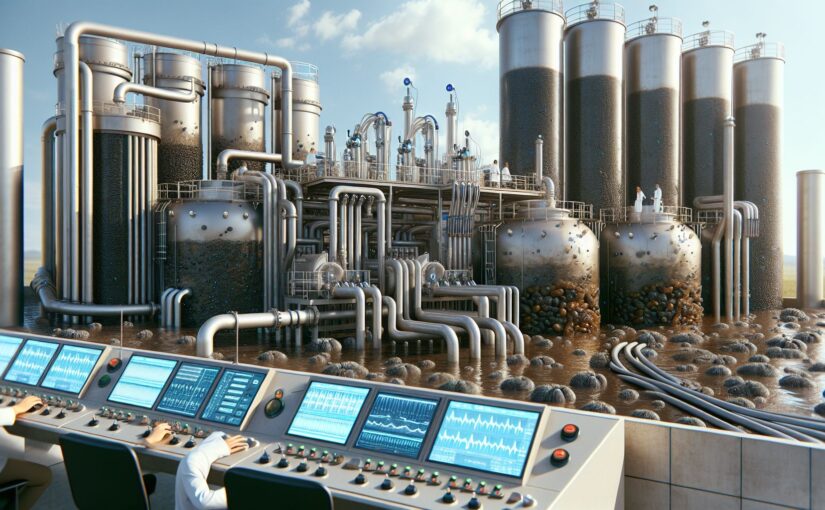Bioelectrochemical wastewater systems have emerged as an influential and promising tool in the fight against water contamination worldwide. Incorporating both biochemical and electrochemical reactions, this method offers a sustainable, affordable, and efficient solution to wastewater treatment by turning pollutants into energy sources.
The Basics of Bioelectrochemical Systems
A bioelectrochemical system (BES) is a biological process that converts chemical energy into electrical energy, or vice versa, by using bacteria or other electro-active organisms as catalysts. When applied to wastewater treatment, these systems can simultaneously purify the water and generate sustainable energy[1^].
The primary component of these systems is the microbial fuel cell (MFC), where bacteria break down organic matter in the wastewater and produce electricity. The ability to generate electricity is what sets BES apart—it not only reduces the wastewater’s pollutant load but also converts it into an energy source.
Benefits and Applications
Bioelectrochemical wastewater systems’ main advantages are their small carbon footprint, low sludge production, and excellent pollutant removal capability. They are also highly adaptable and can be applied to a range of wastewater types—industrial, agricultural, residential—efficiently removing a wide array of pollutants[2^].
Moreover, BES have significant potential in energy production. Waste treatment with these systems contributes to the pressing global need for renewable energy, making BES a potential cornerstone in both waste and energy management sectors.
Challenges
Despite their advantages, the large-scale implementation of BES still faces challenges mainly related to its categorized relatively low power density and the need for highly sophisticated technical skills for maintenance and operation[3^].
However, ongoing research is addressing these barriers. Innovative methods to improve the power density and the system’s overall effectiveness, such as designing new configurations and discovering novel electrogenic organisms, are being evaluated.
In conclusion, bioelectrochemical wastewater systems represent an important breakthrough in environmental biotechnology, with huge potential for sustainable wastewater treatment and renewable energy production.
References
[1] Logan, B. (2008). Microbial Fuel Cells. New Jersey: John Wiley & Sons.
[2] Rinaldi, A., Mecheri, B., Garavaglia, V., Licoccia, S., Di Nardo, P., & Traversa, E. (2008). Engineering materials and biology to boost performance of microbial fuel cells: a critical review. Energy & Environmental Science.
[3] Pant, D., Singh, A., Van Bogaert, G., Olsen, S. I., Nigam, P. S., Diels, L., & Vanbroekhoven, K. (2012). Bioelectrochemical systems (BES) for sustainable energy production and product recovery from organic wastes and industrial wastewaters. RSC advances, 2(4), 1248-1263.
